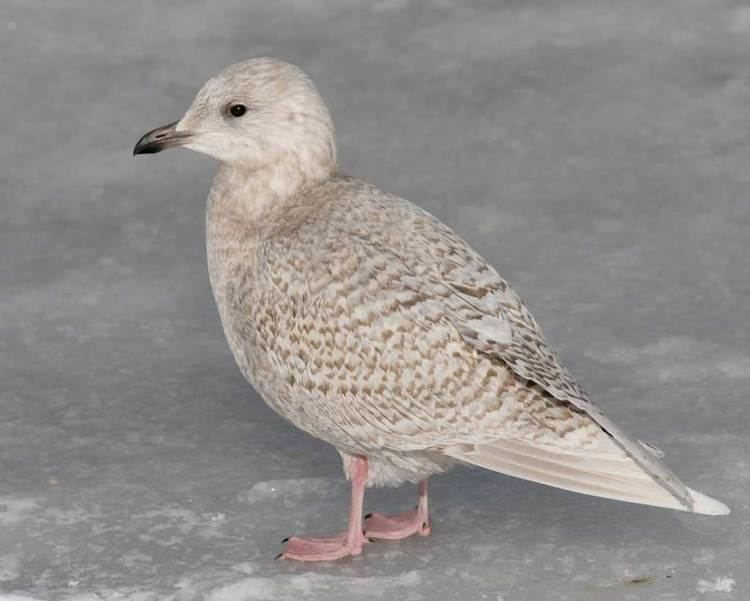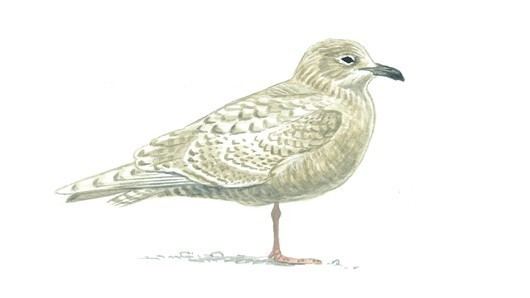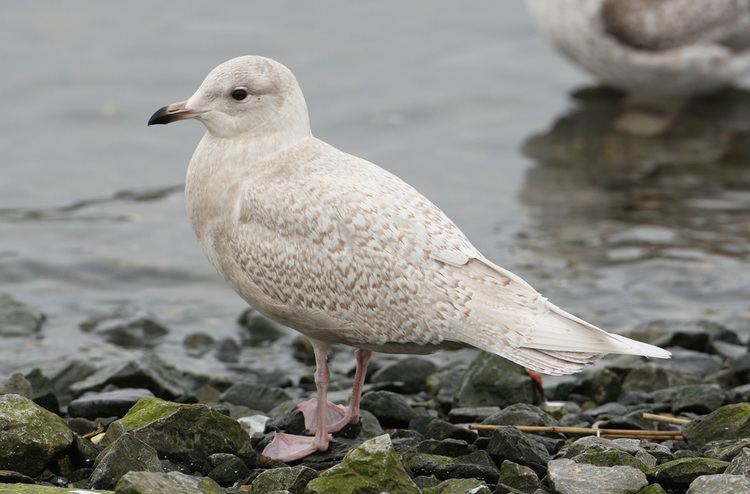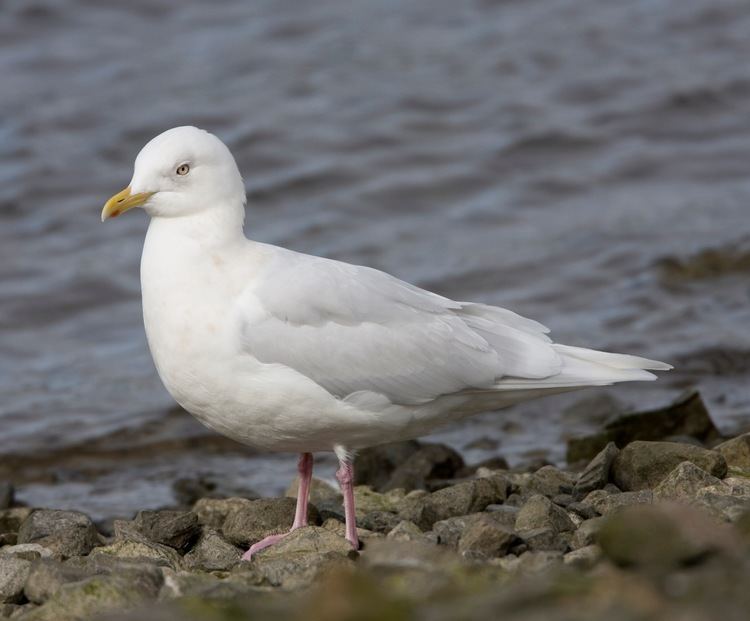Phylum Chordata Rank Species | Family Laridae Scientific name Larus glaucoides Higher classification Ivory gulls Order Shorebirds | |
 | ||
Similar Bird, Glaucous gull, Gulls, Great black‑backed gull, Ring‑billed gull | ||
Caspain gull iceland gull
The Iceland gull (Larus glaucoides) is a medium size gull which breeds in the Arctic regions of Canada and Greenland; although not in Iceland (as its name suggests), where it is only seen during winter. The genus name is from Latin Larus which appears to have referred to a gull or other large seabird. The specific glaucoides denotes its resemblance to Larus glaucus, a synonym of Larus hyperboreus, the glaucous gull; -oides is Ancient Greek and means "resembling".
Contents

It is migratory, wintering from in the North Atlantic as far south as the British Isles and northernmost states of the eastern United States, as well as in the interior of North America as far west as the western Great Lakes. It is much scarcer in Europe than the similar glaucous gull.

The American taxon Kumlien's gull is often considered a subspecies, L. g. kumlieni, of Iceland gull.
This species breeds colonially or singly on coasts and cliffs, making a nest lined with grass, moss, or seaweed on the ground or cliff. Normally 2–3 light brown eggs are laid.

The nominate subspecies, L. g. glaucoides, is very pale in all plumages, with absolutely no melanin in the tips of the primaries in adult plumage. Adults are pale grey above, with a yellowish-green bill. Immatures are very pale grey; the bill is more extensively dark than with glaucous gull, and lacks pink.

The Iceland gull is a medium size gull, although relatively slender and light-weight. In length, it can measure from 50 to 64 cm (20 to 25 in), wingspan is from 115 to 150 cm (45 to 59 in) and weight is from 480 to 1,100 g (1.06 to 2.43 lb). Among standard measurements, the wing chord is 37.9 to 44.3 cm (14.9 to 17.4 in), the bill is 3.6 to 5.4 cm (1.4 to 2.1 in) and the tarsus is 4.9 to 6.7 cm (1.9 to 2.6 in). It is smaller and thinner-billed than the very large glaucous gull, and is usually smaller than the herring gull. It takes four years to reach maturity.

The call is a "laughing" cry like herring gull, but higher pitched.
Like most Larus gulls, these are omnivores, eating fish, molluscs, offal, scraps, and eggs. They forage while flying, picking up food at or just below the water's surface, also feeds while walking or swimming. Their scavenging habits lead them to frequent garbage dumps, sewage outlets, and places where fish are cleaned.

